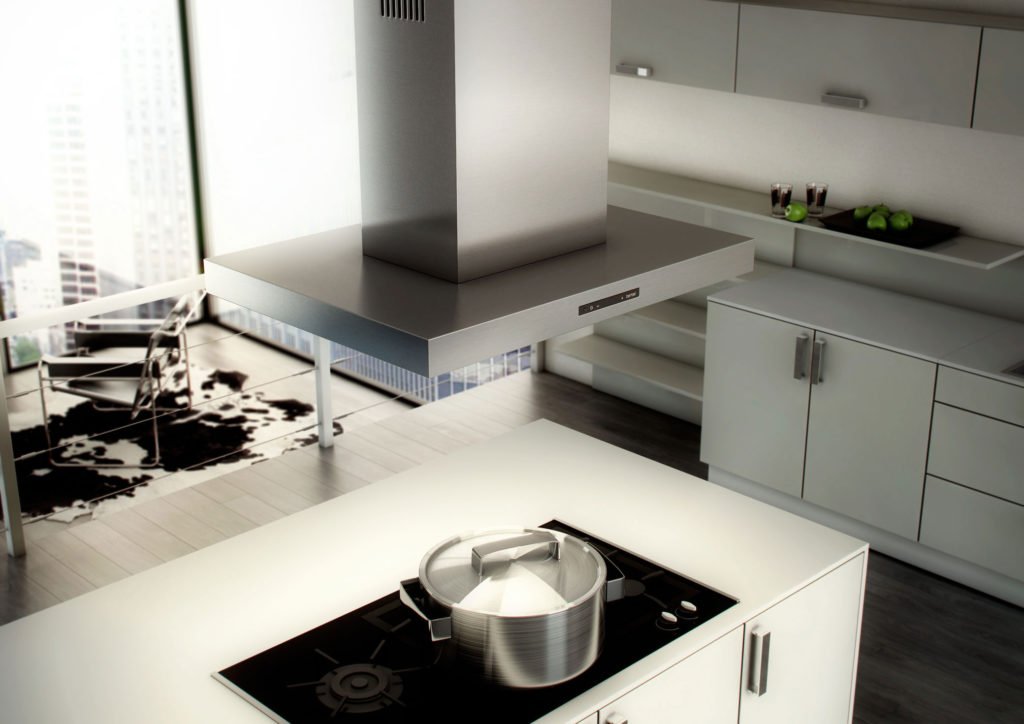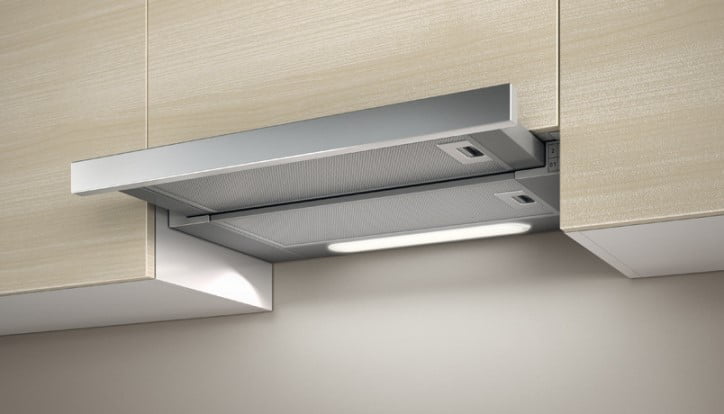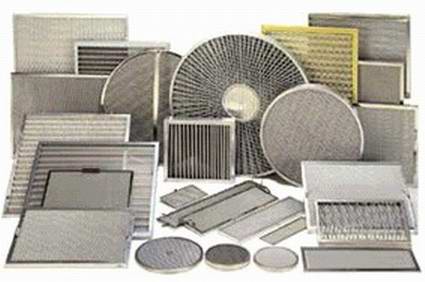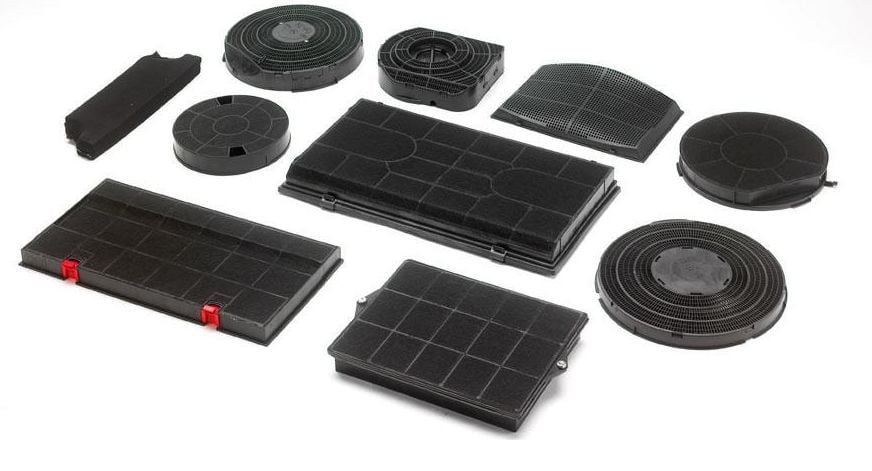Choosing the Right Kitchen Exhaust Hood
Many of us spend a considerable amount of time in the kitchen, preparing and enjoying meals. However, we don’t always feel comfortable there. This is often due to increased humidity, unpleasant odors, and potentially harmful fumes that can affect our health during cooking.
Sometimes, it’s impossible to avoid these issues by simply ventilating the kitchen naturally. That’s where a kitchen exhaust hood comes in handy, as it can effectively address these problems.
Let’s go over the key factors to pay special attention to when selecting a kitchen exhaust hood:
- Types of Construction
- Air Purification Methods
- Types of Filters
- Performance
- Exhaust Hood Specifications
Types of Kitchen Exhaust Hood Construction
Here, we’ll briefly cover the various designs of exhaust hoods, as there are quite a few different options:
Island Hoods: These hoods are attached to the ceiling directly above the cooking area, typically used when the stove is located in the center of the kitchen. They are called “island” hoods because they are not attached to any walls.
2. Corner Hoods: As the name suggests, these hoods are installed in the corner of the room.
3. Built-In Hoods: The distinctive feature of this type is the retractable panel designed to increase the air intake area. It’s a very convenient exhaust hood that maximizes workspace efficiency. The most compact ones are considered suspended hoods, but they have lower performance and are rarely connected to ventilation.
Types of Air Purification
In this section, there are only 2 subtypes, and some modern exhaust hoods combine them. Let’s start with recirculation. The main principle of operation involves filtering the air and returning it to the room. This retains heat, which is particularly useful on cold days. It is convenient to use in older homes with clogged ventilation systems. The ducted method of purification is based on removing polluted air from the kitchen since the exhaust hood is directly connected to the building’s ventilation. This system is more complex, but the advantage is that all contaminated air is removed from the room. Most modern exhaust hoods are combined and have two modes, allowing you to choose the appropriate option depending on the situation.
Types of Filters for Kitchen Exhaust Hoods
In this era of progress, every company develops its own type of filters. Each has its pros and cons. Let’s look at the main ones:
Grease Traps – coarse filters protect against large grease particles and combustion products (accumulation on the motor and fan).
- Synthetic, non-woven, and paper filters. These are disposable filters with specific markings on their surface, and when they can no longer be distinguished, it’s time to replace them.
- Acrylic filters. These are reusable filters; you just need to remove and clean them from dust and dirt once a month.
- Aluminum filters. Also reusable, they consist of several thin layers of perforated aluminum. They can even be cleaned in a dishwasher.
Fine purification filters are designed to capture smaller particles and neutralize odors.
For example, charcoal filters. These filters are made of activated charcoal and are disposable. Replacement is typically required every 5-6 months. Often, exhaust hoods with electronic controls come with a filter contamination indicator. This way, you will be sure to know when it becomes clogged, and your device won’t operate inefficiently.
Performance of Kitchen Exhaust Hood
The power of an exhaust hood depends on the volume of the room where it will be installed. Many models indicate the room size on the packaging. The higher the power, the greater its performance. The performance range of all models typically ranges from 100 to 1600 cubic meters per hour. Starting from 800, hoods are considered professional-grade. Ideally, for accurate calculation, you should multiply the room’s area by its ceiling height and then multiply that number by six since the exhaust hood should perform a six-fold air exchange in the room per hour. Each model has several speeds, and this determines the intensity of operation and varying electricity consumption.
Parameters and Dimensions of Kitchen Exhaust Hood
The dimensions of all exhaust hoods are standard. The determining factor for selection is typically the width (50, 60, 90, and 120 cm). In any case, it should match or be larger than the working surface; otherwise, it won’t serve any purpose.
Another important parameter is the noise level produced during operation, measured in decibels. It’s acceptable to aim for around 60-70 dB. Hood control should not be problematic; maximum convenience is desired. There are button-based, touch-sensitive, and electronic controls.
The electronic control option allows setting operation modes at different time intervals. It also enables you to detect filter contamination levels and automatically increase power, activate lighting when approaching the device, and much more.
It’s also worth mentioning the lighting. Currently, the market offers various types of bulbs that find their application in hood lighting. These include halogen, fluorescent, neon, LED, and incandescent bulbs. Depending on the technologies used, they have different lifespans, light brightness, and energy efficiency.
Tips on How to Choose a Kitchen Exhaust Hood
So, to sum it up: it’s best to purchase a combined exhaust hood with both recirculation and ducted modes, which you can use depending on the situation.
For coarse purification filters (grease traps), it’s better to choose aluminum filters, which will last a lifetime, although you’ll need to clean them periodically. For fine purification, charcoal filters are suitable. In this case, you’ll need to replace them every 5-6 months.
The ducted mode is generally more cost-effective because, regardless of the type of filter, the purification efficiency is about 70%. However, during cold seasons, recirculation mode may be more advantageous as it helps retain warmth in your home.
Also, please read “Smartphone with the best camera“.




